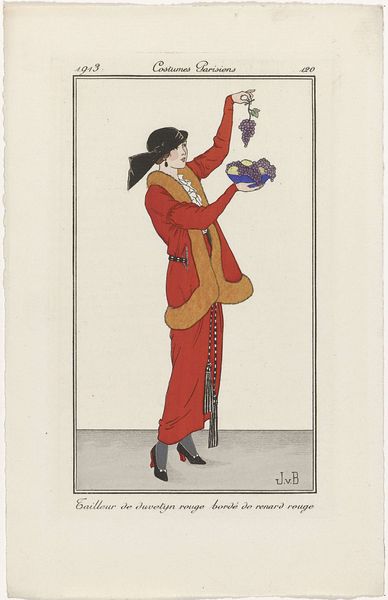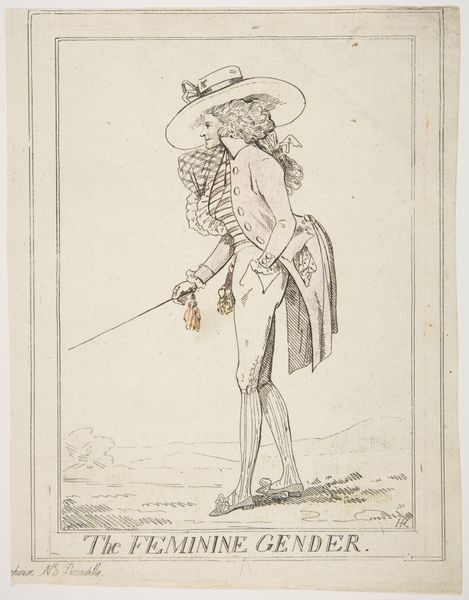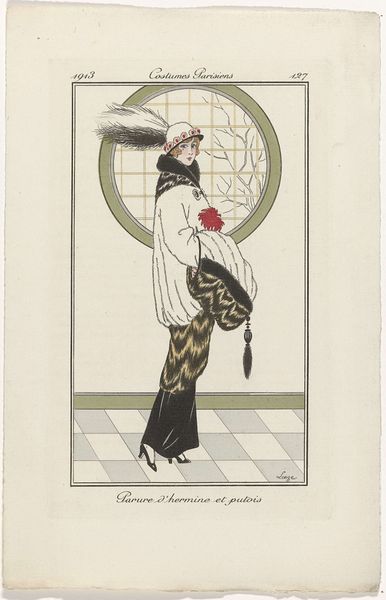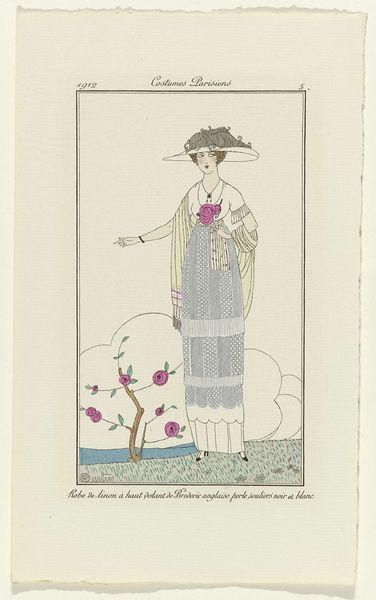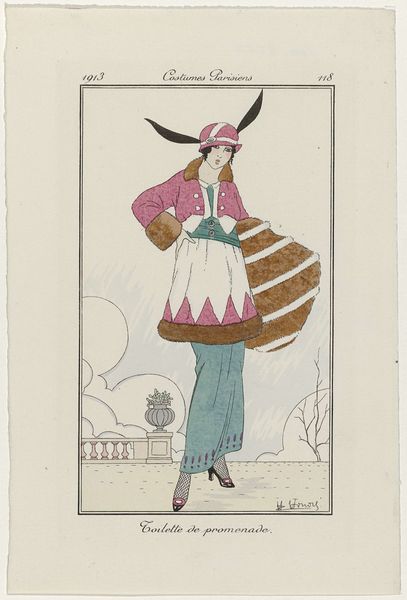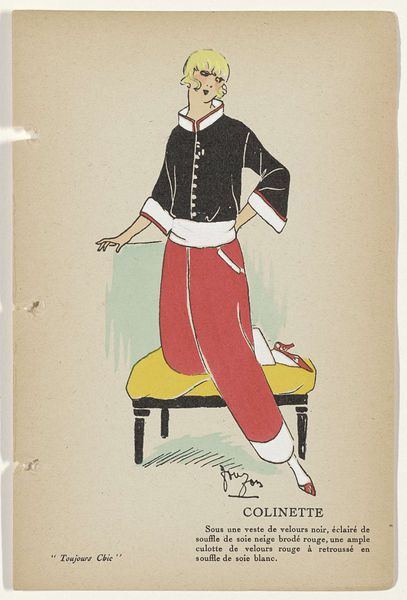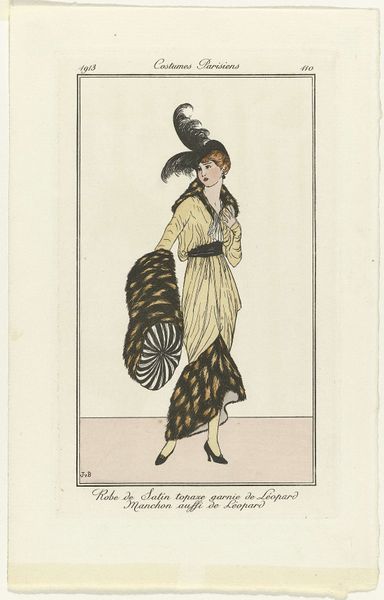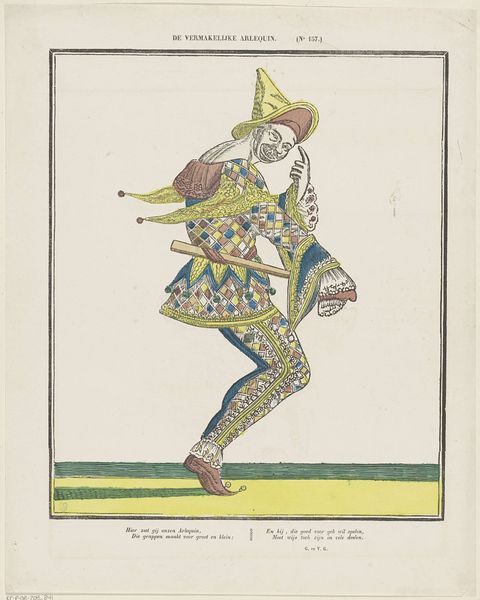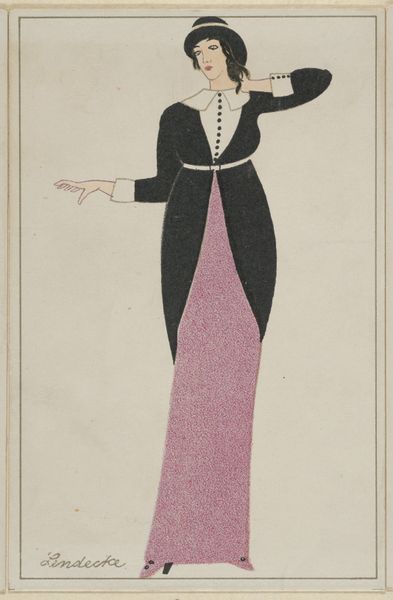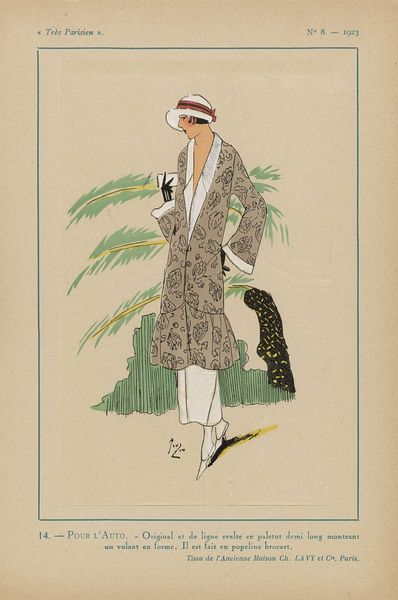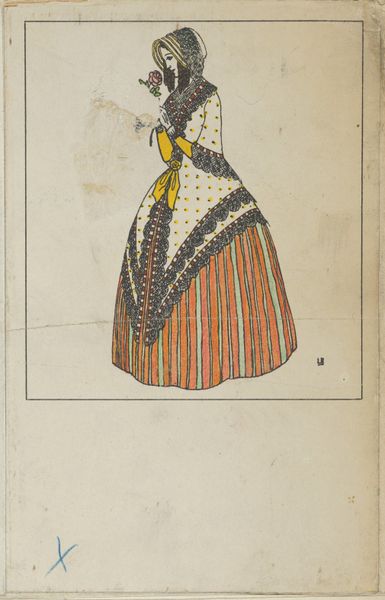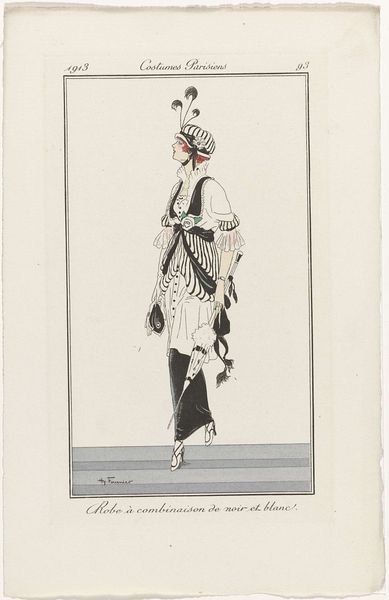
Journal des Dames et des Modes, Costumes Parisiens, 1913, No. 122 : Toilette au goût Vénitien 1913
0:00
0:00
painting, print, watercolor
#
portrait
#
art-nouveau
#
painting
# print
#
figuration
#
watercolor
#
watercolour illustration
#
decorative-art
Dimensions: height 176 mm, width 109 mm
Copyright: Rijks Museum: Open Domain
Curator: This delightful watercolor print, "Journal des Dames et des Modes, Costumes Parisiens, 1913, No. 122 : Toilette au goût Vénitien" is by Umberto Brunelleschi. The image itself is of a women elegantly dressed, typical of the Art Nouveau movement. What are your first impressions? Editor: The most striking element to me is the contrasting textures. The gossamer weight of the lace against the defined structure of the pink frock, complete with miniature button details. One feels the difference between the hours of labor represented in those two items. Curator: Indeed! Note the meticulous line work throughout, particularly in the lace veil and the subtle shading of the gown. Brunelleschi uses line to define form but also to create a sense of lightness, echoing Art Nouveau principles. There’s a decorative element that almost obscures form, yet it delights. Editor: Absolutely. But considering this image as a print from "Journal des Dames et des Modes", a fashion magazine, one must consider production, not merely surface appeal. I imagine the artist would have worked with a workshop of printers. Each color would likely require a new plate or stencil to create this final product for a wealthy consumer. Curator: It’s intriguing to consider the role of mechanical reproduction within a context so dedicated to elegance. We find a similar tension within the Symbolist movement and the Pre-Raphaelites where there is a resistance to modern industrial aesthetics, whilst the image still is distributed to the masses. Note how the printmaker achieves a sense of depth by overlapping planes, but that this may not be soley motivated by creating depth, but rather an awareness of color layering from different prints being layed on top of each other in turn. Editor: Yes! The artistic choice would have come about precisely because of these processes and labor practices. I find it important that we can bring this consciousness when appreciating decorative-art such as this one. The choices regarding composition, coloration, form is a combination of artistic intention and the available resources that were around the artist. Curator: Looking closer reveals how even "decorative" arts reveal insights into the values of a time period. What first seems like an unassuming period print can have surprising structural intricacies that offer insights into the artistic ideas from this age. Editor: It's rewarding to look past what many may see as just another historical document. Understanding artistic practice can alter the ways in which we understand even simple prints as bearers of larger truths.
Comments
No comments
Be the first to comment and join the conversation on the ultimate creative platform.
